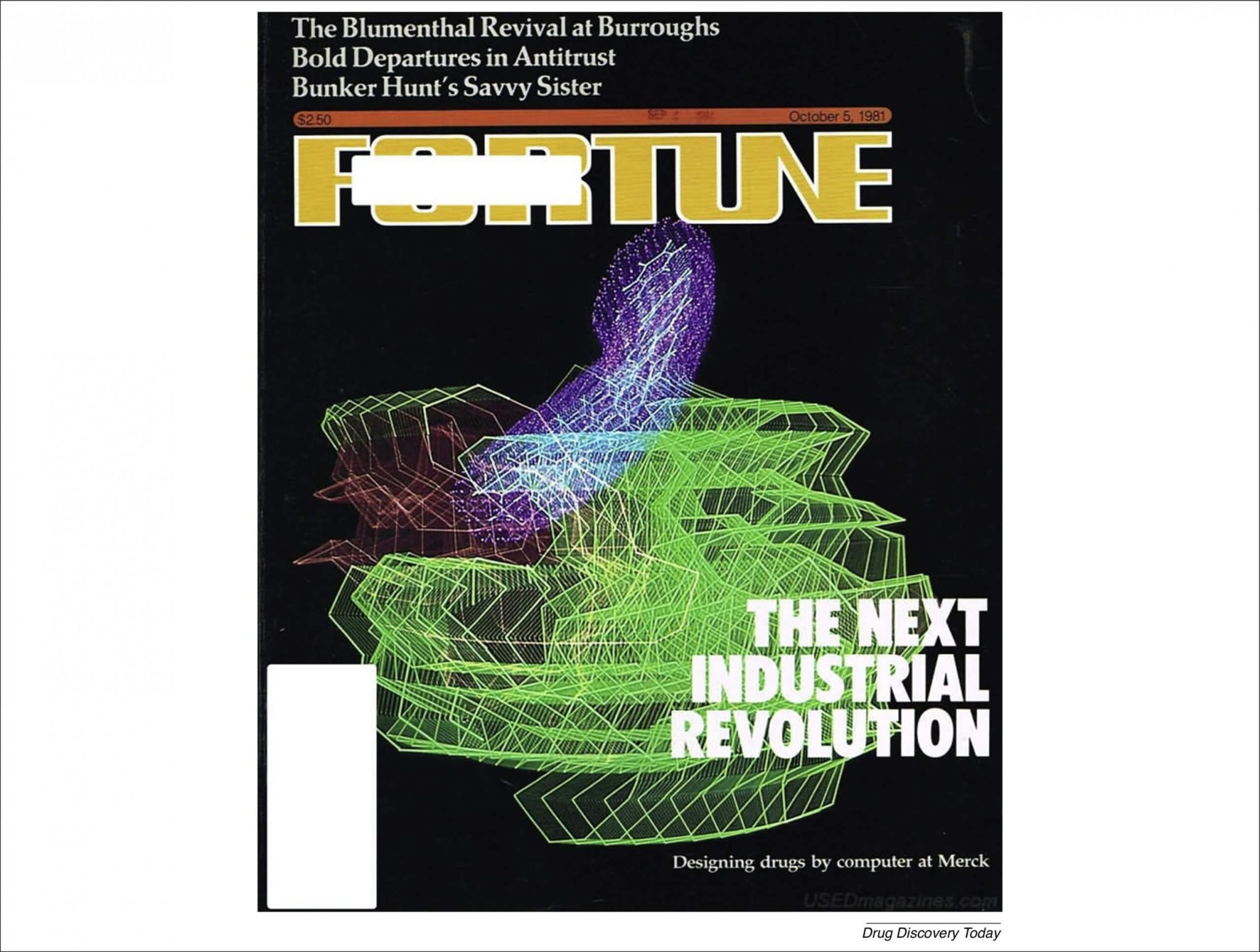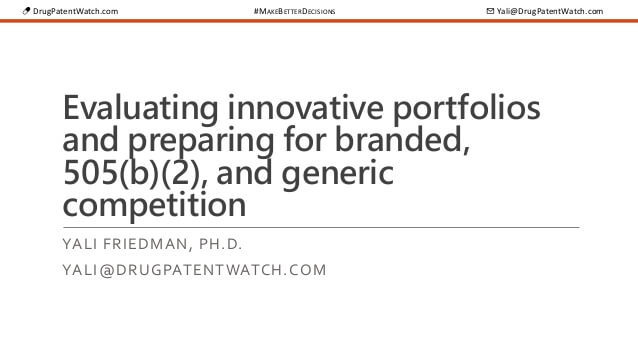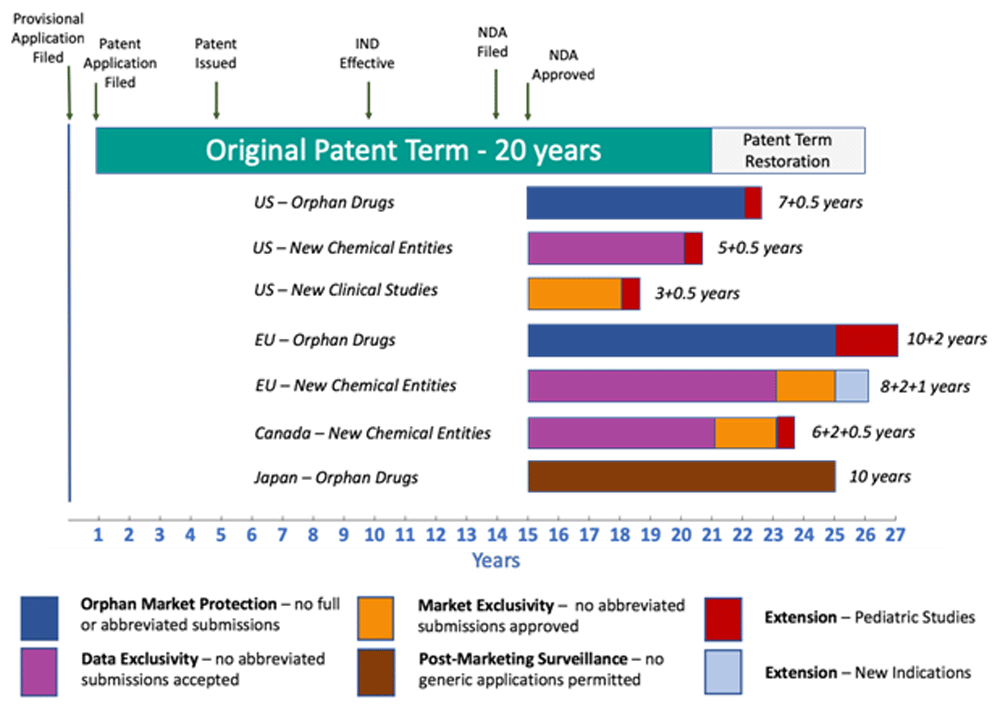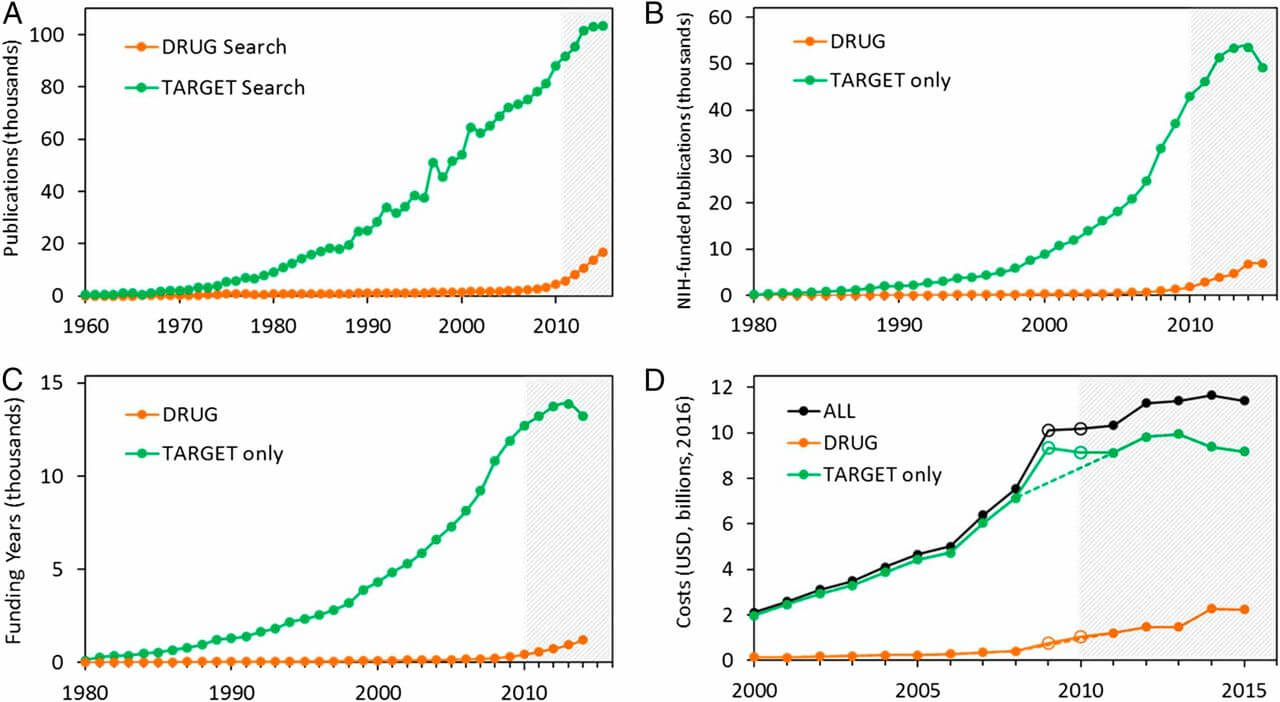Artificial intelligence stands at a critical crossroads in pharmaceutical innovation, simultaneously revolutionizing drug discovery while fundamentally altering the intellectual property landscape. The pharmaceutical industry is witnessing unprecedented technological transformation as AI algorithms rapidly analyze vast datasets, predict molecular structures, and accelerate clinical trial processes. However, this technological revolution brings complex implications for patent law and protection strategies. As companies increasingly integrate AI tools into their research and development pipelines, a pivotal question emerges: will artificial intelligence ultimately strengthen pharmaceutical patent portfolios by facilitating breakthrough innovations, or will it undermine patent protection by generating an unmanageable volume of prior art and challenging traditional notions of inventorship? This analysis examines the multifaceted relationship between AI and pharmaceutical patents, exploring how companies are navigating this rapidly evolving landscape to secure their intellectual property assets while leveraging AI’s tremendous potential for drug discovery and development.
The Dual Nature of AI in Pharmaceutical Innovation
Artificial intelligence represents both an unprecedented opportunity and a significant challenge for pharmaceutical companies seeking patent protection. This duality forms the cornerstone of the industry’s complex relationship with AI technologies.
AI as an Innovation Accelerator
The integration of artificial intelligence into drug discovery workflows has dramatically accelerated the pace of innovation in the pharmaceutical sector. Machine learning algorithms can now process vast chemical datasets, identify promising drug candidates, and predict their efficacy with increasingly impressive accuracy. Google’s DeepMind, for instance, developed AlphaFold2, which accurately predicted the three-dimensional structures of over 200 million proteins—an achievement that would have required years of traditional laboratory work to accomplish[4].
This acceleration enables pharmaceutical companies to identify potential therapeutic compounds much more rapidly than conventional methods allow. Rather than relying solely on time-consuming experimental approaches, researchers can leverage AI to analyze existing data, identify patterns, and generate hypotheses at unprecedented speed. The result is a significantly compressed timeline from initial concept to patentable innovation.
“AI is poised to revolutionize drug development by streamlining processes and reducing costs,” notes Daniel Lee, an expert in AI and pharmaceuticals. “However, the legal framework surrounding AI-generated inventions is still evolving, posing significant challenges for patenting these innovations”[4].
AI as a Patent Barrier
While AI accelerates innovation, it simultaneously creates new obstacles for patent protection. The same generative capabilities that enable rapid discovery can produce vast volumes of potential therapeutic compounds and structures—many of which may be published as “prior art,” undermining the novelty requirement essential for patentability[2].
Pharmaceutical companies are already encountering what they suspect is AI-generated prior art during patent application processes. As AI systems become more sophisticated and widely deployed, this challenge will likely intensify. Furthermore, litigation opponents can easily cite similar AI-generated material to invalidate patents they’re accused of infringing[2].
“You could imagine using some of these tools to identify potential therapeutic compounds, and making it harder for others to patent those things,” explains Dan Rudoy, shareholder at Wolf, Greenfield & Sacks PC[2].
The Rising Prominence of AI in Drug Development
The pharmaceutical industry’s adoption of AI technologies has accelerated dramatically in recent years, reshaping traditional research and development paradigms.
Current Implementation Landscape
Pharmaceutical companies are integrating AI across the entire drug development pipeline, from initial target identification to clinical trial optimization. The market recognizes this transformation—AI startup companies in the drug development sector generated approximately $2.1 billion in just the first half of 2021, highlighting the growing investor confidence in AI-driven pharmaceutical innovations[4].
Companies like Intelligencia AI exemplify this trend, having recently received a U.S. patent for their AI-powered system that predicts the likelihood of FDA approval for drug candidates. Their SaaS platform provides on-demand access to AI-powered insights based on proprietary data and algorithms, enabling more informed portfolio and research decisions[1].
Impact on Research Efficiency
The efficiency gains from AI implementation are substantial. Traditional drug discovery methods often required decades of research and billions of dollars in investment before delivering marketable treatments. AI technologies dramatically compress this timeline by:
- Identifying promising molecular structures from vast chemical libraries
- Predicting drug-target interactions without extensive laboratory testing
- Optimizing chemical structures for improved efficacy and reduced side effects
- Analyzing clinical trial data to identify optimal patient populations
Intelligencia AI’s system demonstrates remarkable predictive performance, with prospectively validated accuracy of 83% in forecasting FDA approvals for Phase 2 oncology programs, and 90% when measured retrospectively[1]. Such capabilities significantly de-risk the drug development process, allowing companies to focus resources on candidates with higher probabilities of success.
Patent Protection Fundamentals in Pharmaceutical Innovation
Understanding the traditional patent protection framework is essential for contextualizing how AI is reshaping the pharmaceutical intellectual property landscape.
Traditional Patent Requirements
Pharmaceutical patents have historically served as the cornerstone of innovation incentives in the industry. To obtain patent protection, pharmaceutical innovations must satisfy several fundamental requirements:
- Novelty: The invention must be new and not previously disclosed in the public domain.
- Non-obviousness: The invention must represent a non-obvious advance over existing knowledge to someone skilled in the field.
- Utility: The invention must have a specific, substantial, and credible utility.
- Enablement: The patent application must describe the invention in sufficient detail to enable others to make and use it.
These requirements have traditionally been applied to innovations primarily conceived and developed by human researchers through conventional laboratory methods.
Unique Challenges in Pharmaceutical Patenting
Even before AI’s emergence, pharmaceutical patents faced distinctive challenges:
- High Development Costs: The pharmaceutical industry’s extensive R&D investments necessitate robust patent protection to recoup costs.
- Regulatory Approval Timelines: The lengthy FDA approval process effectively shortens the marketable patent life.
- Generic Competition: Once patents expire, generic manufacturers can produce equivalent treatments at lower costs.
- Global Protection Disparities: Varying patent laws across jurisdictions create complex international protection strategies.
These established challenges are now intersecting with the novel implications of AI-assisted drug discovery, creating an increasingly complex patent landscape for pharmaceutical innovators to navigate.
How AI Strengthens Pharmaceutical Patent Positions
Despite the challenges, artificial intelligence offers several significant advantages for strengthening pharmaceutical patent positions when strategically implemented.
Accelerating Novel Discovery
AI algorithms excel at identifying non-obvious patterns in complex datasets, enabling researchers to discover novel molecular structures and therapeutic approaches that might remain hidden using conventional research methods. This capability directly translates to potentially stronger patent positions by:
- Uncovering entirely new classes of therapeutic compounds
- Identifying unexpected relationships between chemical structures and biological targets
- Revealing novel applications for existing compounds
The acceleration of novel discovery through AI means pharmaceutical companies can file patents earlier and more frequently, potentially expanding their intellectual property portfolios with truly innovative therapies.
Enhancing Evidence for Patentability
AI systems can generate robust supporting data for patent applications, strengthening their patentability. Machine learning models can:
- Provide comprehensive structural analysis of novel compounds
- Generate comparative data against existing treatments
- Predict mechanism of action with greater precision
- Model potential efficacy across diverse patient populations
Intelligencia AI’s patented system exemplifies this capability, as it can adjust assessments of probability of success when clinical trial parameters are modified, maintaining data integrity and high-accuracy standards[1]. Such robust predictive capabilities provide valuable evidence for patent applications, potentially improving their chances of approval.
Optimizing Patent Strategy
Beyond discovery, AI can strategically strengthen patent positions by:
- Identifying optimal claim scope to balance protection breadth with defensibility
- Predicting potential challenges to patent validity
- Analyzing competitor patent landscapes to identify white space opportunities
- Optimizing global filing strategies based on market potential
By leveraging these capabilities, pharmaceutical companies can develop more sophisticated, data-driven patent strategies that maximize protection while minimizing vulnerability to challenges.
How AI Challenges Pharmaceutical Patent Protection
While AI offers substantial benefits, it simultaneously presents significant challenges to pharmaceutical patent protection that companies must navigate carefully.
The Prior Art Problem
Perhaps the most immediate threat AI poses to pharmaceutical patents is the generation of an unprecedented volume of prior art. AI systems can rapidly:
- Generate and publish millions of potential molecular structures
- Create “defensive publications” specifically designed to prevent patenting
- Identify and document structure-activity relationships across countless compounds
- Predict therapeutic applications for existing molecules
This capability is already being leveraged as a strategic tool. AI could be used to generate defensive publications of every variation it can make of claims in existing patents, deliberately flooding the public domain with potential innovations to prevent competitors from securing exclusive rights[2].
“You could imagine using some of these tools to identify potential therapeutic compounds, and making it harder for others to patent those things.” — Dan Rudoy, shareholder at Wolf, Greenfield & Sacks PC[2]
The pharmaceutical industry is already encountering what they suspect is AI-generated prior art during patent application processes, and litigation opponents can easily cite similar material to invalidate patents they’re accused of infringing[2].
Inventorship Dilemmas
Another fundamental challenge emerges around inventorship—a core concept in patent law now complicated by AI’s role in the creative process. The U.S. Patent and Trademark Office has unequivocally stated that AI cannot be listed as an inventor. Instead, a human must make a “significant contribution” to the inventive process for a patent to be granted[4].
This requirement raises complex questions about the extent of human involvement necessary when AI plays a substantial role in the discovery process. As AI systems become more autonomous in generating novel compounds, determining appropriate inventorship becomes increasingly problematic.
“Using an AI tool, by itself, does not make an invention unpatentable,” explains Michael Kahn, a partner at Akin’s IP practice. “However, the human’s role in the inventive process must be significant, such as designing experiments based on AI outputs or training the AI tool to solve specific problems”[4].
Transparency and Disclosure Challenges
AI systems often operate as “black boxes,” making it difficult to fully explain how they arrive at certain conclusions or generate specific structures. This opacity poses significant challenges for meeting the disclosure requirements of patent applications, which typically demand clear explanation of how an invention works and how it can be reproduced[4].
Patent examiners are increasingly scrutinizing applications based on AI-generated data, particularly when claims encompass vast numbers of compounds with limited experimental validation. Recursion Pharmaceutical’s PCT application (WO2024039689) for Heterocycle RBM39 Modulators faced this exact challenge—claim 1 encompassed thousands of chemical compounds, resulting in a non-establishment of opinion on patentability as it was deemed implausible that even a fraction of those molecules would have the claimed activity without supporting data[5].
Legal Frameworks Evolving Around AI and Patents
The legal landscape governing AI and pharmaceutical patents is rapidly evolving as patent offices and courts grapple with novel questions about innovation in the age of artificial intelligence.
Current Patent Office Positions
Patent offices worldwide are developing guidelines for AI-assisted inventions, though consistent approaches have yet to emerge globally:
- United States: The USPTO has maintained that AI cannot be listed as an inventor, and a human must make a “significant contribution” to the inventive process. The USPTO has been directed to publish additional guidance on the patent eligibility of AI innovations by July 2024[4].
- United Kingdom: The UK Court of Appeal has similarly ruled that AI cannot be named as an inventor[5].
- European Patent Office: The EPO has maintained that inventors must be natural persons, rejecting applications naming AI systems as inventors.
These positions reflect the continued centrality of human creativity in patent law, even as AI’s role in the innovative process expands dramatically.
Emerging Case Law
Court decisions are beginning to shape how AI-assisted inventions will be treated in the pharmaceutical context:
- Thaler v. Vidal: This case challenged the USPTO’s rejection of patent applications listing AI system DABUS as the inventor. Courts upheld the USPTO’s position that inventors must be human.
- Plausibility Standards: Multiple applications claiming large numbers of AI-generated compounds have faced rejection based on “plausibility” objections, as well as lack of novelty and inventive step[5].
As Michael Kahn notes, “Striking a balance between harnessing AI’s capabilities and adhering to patent laws requires proactive strategies. This includes clarifying the boundaries of patent-eligible subject matter and addressing the nuances of inventorship in an AI-integrated landscape”[4].
International Harmonization Efforts
The global nature of pharmaceutical development and AI innovation has prompted calls for international harmonization of patent approaches. Key initiatives include:
- WIPO Conversations: The World Intellectual Property Organization has initiated ongoing discussions about AI and IP policy.
- Trilateral Patent Offices: The USPTO, EPO, and Japan Patent Office continue to discuss coordinated approaches to emerging technologies.
- IP5 Initiatives: The world’s five largest patent offices are working toward greater alignment on AI-related patent examination.
Despite these efforts, significant jurisdictional differences remain, creating strategic challenges for pharmaceutical companies seeking global protection for AI-assisted innovations.
Strategies for Patenting AI-Developed Drugs
As the legal landscape continues to evolve, pharmaceutical companies are developing sophisticated strategies to maximize patent protection for AI-developed drugs while navigating emerging challenges.
Establishing Clear Human Contribution
Given patent offices’ requirement for human inventorship, pharmaceutical companies are implementing processes to clearly document and substantiate human contributions to AI-assisted discoveries:
- Directed Development: Human researchers establish specific parameters and objectives for AI systems, demonstrating intellectual guidance of the discovery process.
- Hypothesis Formation: Human scientists formulate hypotheses that AI systems then test or explore, establishing the human conceptual framework.
- Selection and Refinement: Human experts select promising AI-generated compounds for further development and refinement, demonstrating critical judgment.
- Experimental Validation: Human researchers design and conduct laboratory experiments to validate AI-generated predictions, establishing essential translational steps.
By clearly documenting these human contributions, companies strengthen the inventorship foundation of their patent applications.
Strategic Scope Management
Pharmaceutical companies are increasingly refining their approach to claim scope in AI-generated inventions:
- Focused Claiming: Rather than claiming vast numbers of AI-generated compounds, companies are focusing on narrower sets with robust experimental validation.
- Tiered Protection Strategy: Filing initial patents on platform technologies, followed by subsequent applications on specific compounds as experimental data becomes available.
- Method Patents: Securing patents on novel AI-driven discovery methods alongside compound patents.
“Applicants should therefore carefully consider the scope of their claims in light of these decisions, balancing the need to protect the area around lead compounds that are shown to work whilst avoiding overly ambitious claiming that will lead to rejection of the claims”[5].
Hybrid Protection Approaches
Given the unique challenges of patenting AI-generated inventions, pharmaceutical companies are increasingly adopting hybrid protection strategies:
- Patents + Trade Secrets: Patenting specific compounds while maintaining key aspects of AI algorithms as trade secrets.
- Regulatory Exclusivity: Leveraging regulatory exclusivity periods alongside patent protection to extend market monopoly.
- Data Exclusivity: Securing exclusive rights to training datasets that enable AI discovery of novel compounds.
“In many cases, it may therefore be desirable for AI-platform companies to consider using the trade secrets approach to protect their inventions. Even this approach is not without problems, as successful algorithms may be reverse engineered, and the fluid and competitive nature of the labour market means that it can be challenging to maintain a successful trade secret policy”[5].
The Role of Data in AI-Driven Pharmaceutical Patents
Data quality, quantity, and exclusivity are emerging as critical factors in the patentability of AI-developed drugs, creating new strategic considerations for pharmaceutical companies.
Data as Competitive Advantage
Access to proprietary, high-quality datasets increasingly determines competitive advantage in AI-driven drug discovery:
- Proprietary Clinical Data: Companies with extensive historical clinical trial data possess valuable training resources for AI systems.
- Real-World Evidence: Access to patient outcomes data provides crucial validation opportunities for AI-generated predictions.
- Biological Samples: Physical samples enabling experimental validation of AI predictions represent a tangible asset beyond digital data.
Companies capable of creating or accessing these proprietary datasets gain significant advantages in generating patentable innovations through AI systems.
Data Quality vs. Quantity
While AI systems typically benefit from larger datasets, pharmaceutical patent strategies increasingly emphasize data quality over sheer volume:
- Curated Datasets: Carefully curated datasets focused on specific therapeutic areas often yield more valuable insights than broader but less refined collections.
- Experimental Validation: Laboratory-validated data points carry greater weight in patent applications than purely computational predictions.
- Longitudinal Data: Information tracking outcomes over extended timeframes provides particularly valuable training material for predictive AI systems.
This emphasis on quality addresses patent examiners’ growing skepticism toward applications relying solely on in silico predictions without experimental validation.
Data Privacy and Regulatory Considerations
The pharmaceutical industry’s use of health data for AI training raises complex privacy and regulatory considerations that impact patent strategies:
- HIPAA Compliance: Training AI systems on patient data requires strict adherence to health privacy regulations.
- International Data Transfer: Cross-border data sharing introduces additional regulatory complexity.
- Informed Consent: Ensuring proper consent for data use in AI training represents both an ethical and legal requirement.
These considerations add another layer of complexity to pharmaceutical companies’ AI patent strategies, potentially limiting the datasets available for training proprietary systems.
AI Impact on Patent Litigation and Enforcement
Beyond patent acquisition, AI is transforming how pharmaceutical patents are challenged, defended, and enforced throughout their lifecycle.
AI-Powered Patent Challenges
Artificial intelligence provides powerful tools for challenging pharmaceutical patents:
- Prior Art Discovery: AI can sift through millions of documents to identify relevant prior art that human searchers might miss.
- Validity Analysis: Machine learning models can analyze patent claims against prior art databases to identify potential validity issues.
- Automated Opposition: AI systems can generate comprehensive arguments for patent opposition based on existing law and precedent.
These capabilities make patent challenges potentially more frequent and more sophisticated, requiring pharmaceutical companies to prepare more robust defensive strategies.
Defensive Counter-Measures
In response to AI-powered challenges, pharmaceutical companies are developing enhanced defensive strategies:
- AI-Based Patent Monitoring: Deploying AI systems to continuously monitor potential infringement and competitive patent activity.
- Predictive Litigation Analytics: Using machine learning to predict litigation outcomes and optimize settlement strategies.
- Automated Response Generation: Leveraging AI to develop comprehensive responses to patent office actions and litigation challenges.
These technological counter-measures aim to maintain patent strength in an environment where AI increasingly empowers challengers.
Changing Economics of Patent Disputes
The integration of AI into patent litigation is fundamentally altering the economic calculations around pharmaceutical patent disputes:
- Reduced Discovery Costs: AI document review can significantly reduce the traditionally enormous costs of discovery in patent litigation.
- Faster Resolution: AI-powered analytics can accelerate case assessment and settlement negotiations.
- Shifting Strategic Balance: The accessibility of AI tools may reduce the advantage traditionally held by larger pharmaceutical companies with greater litigation resources.
These economic shifts potentially democratize patent challenges while simultaneously creating new opportunities for pharmaceutical companies to defend their innovations more efficiently.
Case Studies: AI’s Dual Impact on Pharmaceutical Patents
Examining specific cases illustrates the complex reality of how AI is both strengthening and challenging pharmaceutical patent positions.
Intelligencia AI: Patenting AI Systems for Drug Development
Intelligencia AI represents a compelling example of successfully patenting AI technology for pharmaceutical applications. The company recently received U.S. Patent No. 11,948,667 titled “System and Interfaces for Processing and Interacting With Clinical Data,” covering novel techniques for training and leveraging machine learning models to predict FDA approval likelihood for drug candidates[1].
This patent protects the company’s flagship solution, Intelligencia Portfolio Optimizer, which enables customers to objectively assess the probability of technical and regulatory success for drug candidates. The system demonstrates impressive predictive performance—83% prospectively validated accuracy in forecasting FDA approvals for Phase 2 oncology programs, and 90% when measured retrospectively[1].
This case demonstrates how companies can successfully patent AI systems themselves as tools for pharmaceutical development, potentially creating new revenue streams through licensing while strengthening their own drug development capabilities.
Recursion Pharmaceuticals: The Challenge of AI-Generated Compounds
Conversely, Recursion Pharmaceutical’s experience with their PCT application (WO2024039689) for Heterocycle RBM39 Modulators illustrates the challenges companies face when attempting to patent AI-generated compound libraries. The application’s first claim encompassed thousands of chemical compounds generated through AI methods, resulting in a non-establishment of opinion on patentability as patent examiners deemed it implausible that even a fraction of those molecules would have the claimed activity without supporting experimental data[5].
This case highlights the growing skepticism from patent offices toward applications claiming vast numbers of in silico compounds without sufficient experimental validation. It demonstrates the need for pharmaceutical companies to balance AI’s generative capabilities with traditional validation methods to secure strong patent protection.
DeepMind’s AlphaFold: Open Science vs. Patent Protection
Google’s DeepMind took a different approach with AlphaFold2, their revolutionary AI system that accurately predicted the 3D structures of over 200 million proteins. Rather than seeking patent protection, DeepMind opted to release the system’s predictions publicly, dramatically accelerating protein research worldwide while potentially limiting future patentability in this area[4].
This case illustrates an alternative strategy—using AI discoveries to advance the public domain rather than seeking exclusive rights. While this approach sacrifices direct patent revenue, it potentially creates competitive advantages through goodwill, research partnerships, and establishment as a technology leader.
The Future of AI and Pharmaceutical Patents
The relationship between AI and pharmaceutical patents continues to evolve rapidly, with several key trends shaping the horizon for industry stakeholders.
Regulatory Evolution and Adaptation
Patent offices and regulatory bodies worldwide are actively developing new frameworks for AI-assisted innovations:
- USPTO Guidance: The USPTO is expected to publish additional guidance on AI innovation patent eligibility by July 2024, potentially clarifying many current uncertainties[4].
- Harmonization Efforts: International bodies are working toward greater alignment on AI patent examination standards.
- Industry-Specific Guidelines: Pharmaceutical-specific AI patenting guidelines may emerge as the sector’s unique challenges become better understood.
These regulatory developments will significantly impact pharmaceutical companies’ AI patenting strategies in coming years.
Technological Convergence
The integration of AI with other emerging technologies promises to further transform the pharmaceutical patent landscape:
- AI + Quantum Computing: Quantum computational methods may dramatically enhance AI’s ability to model complex biological systems.
- AI + Synthetic Biology: The combination of AI with synthetic biology techniques could revolutionize drug manufacturing and design.
- AI + Digital Therapeutics: AI-powered digital therapeutic approaches may create entirely new categories of patentable treatments.
These technological convergences will likely create novel patentable innovations while further challenging traditional patent frameworks.
Balancing Innovation and Protection
The pharmaceutical industry faces a delicate balancing act between leveraging AI’s innovative potential and securing adequate intellectual property protection:
- Open Innovation Models: Collaborative AI development may provide competitive advantages outside traditional patent exclusivity.
- Strategic Publication: Selective defensive publication may become a more common strategy to prevent competitors from securing patents.
- Portfolio Diversification: Companies may pursue broader portfolios of narrower patents rather than fewer broader patents.
As Ryan Dowell, counsel at Akin’s IP practice, notes: “AI’s generative capabilities can blur the lines between human and machine contributions. This necessitates a careful balance between leveraging AI’s potential and adhering to patent laws”[4].
Key Strategies for Pharmaceutical Companies
Based on current trends and challenges, several strategic approaches emerge for pharmaceutical companies navigating the AI patent landscape.
Documentation and Process Design
Implementing robust documentation systems for AI-assisted discovery processes is becoming essential:
- Decision Tracking: Documenting human decisions throughout the AI-assisted discovery process.
- Contribution Mapping: Clearly mapping human contributions to each aspect of AI-generated innovations.
- Laboratory Validation Protocols: Establishing clear procedures for experimentally validating AI predictions.
These documentation practices strengthen patent applications by clearly establishing human inventorship and providing evidence of utility beyond computational predictions.
Balanced Portfolio Approach
A diversified patent portfolio strategy helps mitigate the unique risks of AI-assisted drug discovery:
- Platform Patents: Securing protection for novel AI methods and tools used in drug discovery.
- Compound Patents: Patenting specific therapeutic compounds with robust experimental validation.
- Formulation Patents: Protecting novel formulations of AI-discovered compounds.
- Application Patents: Securing method-of-treatment patents for novel therapeutic applications.
This diversified approach creates multiple layers of protection, reducing vulnerability to challenges against any single patent.
Competitive Intelligence Enhancement
AI tools themselves provide powerful competitive intelligence capabilities that inform patent strategy:
- Patent Landscape Analysis: Using AI to comprehensively map competitor patent positions.
- Whitespace Identification: Leveraging AI to identify unprotected innovation opportunities.
- Threat Assessment: Continuously monitoring for potential patent challenges using AI tools.
By employing these intelligence capabilities, pharmaceutical companies can develop more sophisticated, data-driven patent strategies that maximize protection in an increasingly complex landscape.
Key Takeaways
The relationship between AI and pharmaceutical patents represents a complex and rapidly evolving landscape that requires nuanced strategic approaches:
- Dual Impact: AI simultaneously strengthens pharmaceutical innovation through accelerated discovery while challenging traditional patent protection through prior art generation and inventorship questions.
- Legal Evolution: Patent offices worldwide are developing new frameworks for AI-assisted innovations, with important guidance expected from the USPTO by July 2024.
- Documentation Imperative: Robust documentation of human contributions throughout the AI-assisted discovery process is essential for establishing valid inventorship.
- Strategic Claiming: Patent applications should carefully balance claim scope with experimental validation, avoiding overly broad claims based solely on in silico predictions.
- Hybrid Protection: Many pharmaceutical companies are adopting hybrid protection strategies that combine patents, trade secrets, and regulatory exclusivity.
- Data Advantage: Access to proprietary, high-quality datasets increasingly determines competitive advantage in generating patentable AI-driven innovations.
- Process Adaptation: Companies must adapt their R&D processes to maximize human contribution to AI-assisted discoveries while leveraging AI’s powerful prediction capabilities.
As the pharmaceutical industry continues navigating this complex landscape, strategic adaptability will be essential for maximizing innovation while securing robust intellectual property protection.
Frequently Asked Questions
Can AI be listed as an inventor on a pharmaceutical patent?
No, current patent law in the United States, United Kingdom, and most other jurisdictions explicitly requires that inventors be natural persons. The U.S. Patent and Trademark Office has unequivocally stated that AI cannot be listed as an inventor, and a human must make a “significant contribution” to the inventive process for a patent to be granted[4].
How can pharmaceutical companies prove human contribution to AI-discovered drugs?
Pharmaceutical companies can establish human contribution by documenting specific actions such as: setting parameters for AI searches, formulating hypotheses that guide AI exploration, selecting promising AI-generated candidates for further development, designing experiments to validate AI predictions, and making modifications to AI-suggested structures based on scientific judgment. These documented contributions help establish the necessary human inventorship required for patent protection[4][5].
What are the main challenges in patenting AI-generated drug compounds?
The primary challenges include: demonstrating novelty amid increasing AI-generated prior art, establishing sufficient human inventorship when AI plays a significant role in discovery, meeting disclosure requirements when AI systems operate as “black boxes,” providing adequate experimental validation rather than relying solely on in silico predictions, and appropriately scoping claims to avoid rejections based on implausibility when claiming large numbers of compounds[2][4][5].
Should pharmaceutical companies patent their AI tools or keep them as trade secrets?
This decision depends on specific circumstances. Patenting AI tools provides formal protection but requires public disclosure that could benefit competitors. Trade secret protection avoids disclosure but offers no protection against independent development or reverse engineering. Many companies are adopting hybrid approaches—patenting aspects of their AI systems while maintaining core algorithms and training methodologies as trade secrets. Additionally, specific industry contexts, competitive landscapes, and the nature of the AI innovation all influence this strategic decision[4][5].
How is AI changing pharmaceutical patent litigation?
AI is transforming pharmaceutical patent litigation by: enabling more comprehensive prior art searches that can identify previously overlooked references, providing tools for analyzing patent validity against massive document collections, reducing discovery costs through advanced document analysis, enabling more accurate litigation outcome prediction, and potentially democratizing access to sophisticated patent challenges previously available only to well-resourced competitors. These changes are altering both offensive and defensive patent strategies throughout the pharmaceutical industry[2][4].
Sources cited:[1] https://www.intelligencia.ai/intelligencia-ai-awarded-u-s-patent-for-its-accurate-and-transparent-probability-of-drug-success-assessments/[2] https://news.bloomberglaw.com/ip-law/ai-helps-pharma-find-new-drugs-but-imperils-lucrative-patents[4] https://www.drugpatentwatch.com/blog/patenting-drugs-developed-with-artificial-intelligence-navigating-the-legal-landscape/[5] https://www.wilsongunn.com/resource/news/ai-assisted-drug-discovery-patents-current-environment























